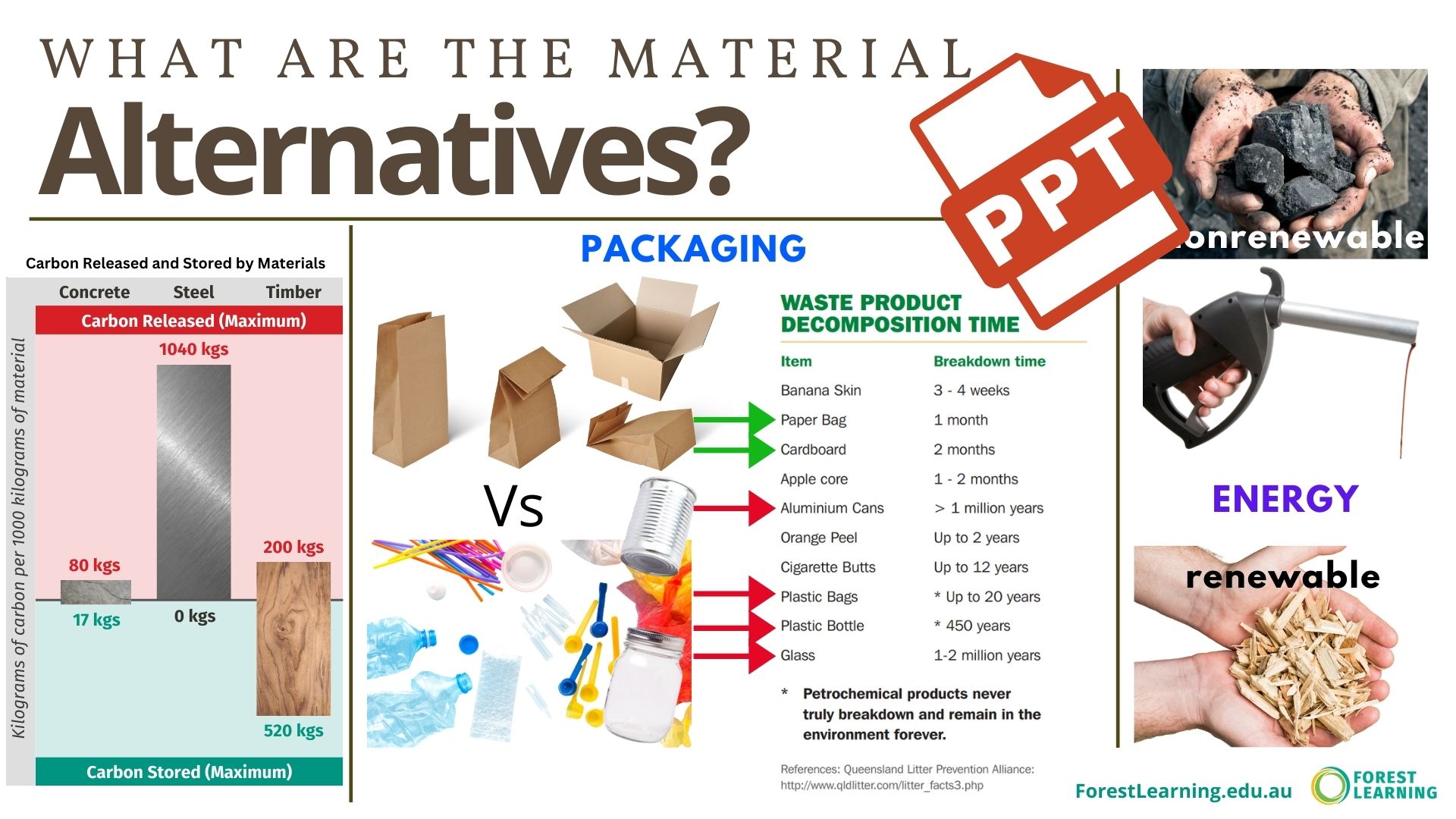What are the Material Alternatives? PPT
Lesson Overview:
If we aren’t using wood, what are we using? It’s essential to explore alternatives and choose the best option for the planet.
This slide makes it easy to begin the discussion with your class about the materials we use and their impact on the environment.
In construction, commonly used materials are: steel, concrete, or wood. Steel and concrete require a significant amount of energy for processing, whereas wood can store more carbon than it takes to produce.
We must also consider the biodegradability of everyday materials. The waste we produce today will affect future generations. For example, paper bags and cardboard decompose into soil within 1-2 months, similar to how sticks decompose on the forest floor. In contrast, glass bottles and aluminum cans can take 1-2 million years to break down if not recycled, burdening future generations with this waste.
Finally, we should evaluate our energy sources, distinguishing between renewable and non-renewable materials. Coal and petrol are non-renewable and major carbon emitters, contributing to climate change. On the other hand, wood as a bioenergy source is renewable. It can be regrown after harvesting, ensuring future generations have access to it. The carbon released when wood is used as a source of fuel for energy production can be offset by new forests absorbing and storing carbon.
Year Level/s:
Key Curriculum Areas / Subject:
N/A
National Curriculum Codes:
N/A
Strand Content Description:
N/A
General Capabilities:
N/A
Cross Curriculum Priorities:
N/A
Curriculum Connections:
N/A
ScOT Catalogue Terms:
N/A
Theme/s:
Resource Type/s:
Primary:
PresentationSecondary:
N/A

teacher Resource
What are the Material Alternatives PPT
This slide supports a discussion about the materials we use, and what their environmental impacts are.
File Size: 3.35 MB
File Type: pptx
Login